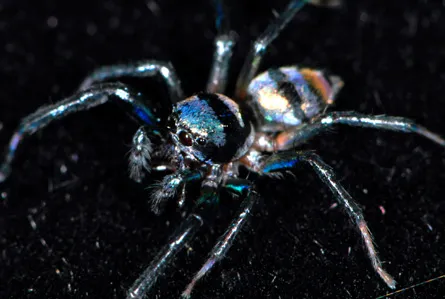The first evidence of the dreaded ultraviolet-B wavelengths as a male come-on has turned up in a jumping spider from Asia.

Males of the small, iridescent jumping spider species Phintella vittata reflect ultraviolet wavelengths, mostly in the 290 to 320 nanometer range designated as B, says Daiqin Li of the National University of Singapore. UV-B is powerful stuff that increases risks of skin cancer and other ills in humans.
Yet females of this jumping spider prefer males with that UV-B charm, Li and his colleagues report in the May 6 Current Biology. The researchers set females in an arena where they could see two males posing and flirting. When a filter above one male screened out the UV-B, females spent barely half as much time watching him than his rival with full spectral glory.
The researchers did other versions of the test with filters that reduced all wavelengths equally. Based on these, the female preference isn’t just a matter of the UV-B guy looking brighter overall than his UV-B-minus rival, Li says.
Darrel Kemp, who studies butterfly courtship in UV-A-flashing species, says he would now like to see similar experiments in which males got stripped of their finery while the background remained the same. Kemp, at James Cook University in Cairns, Australia, says he sees a “slight possibility that females paid more attention to the UV-B-plus male because this was a more natural-looking setting.”
Still, he calls the results “the strongest evidence that UV-B might be used in sexual signaling, which is a significant step forward.”





